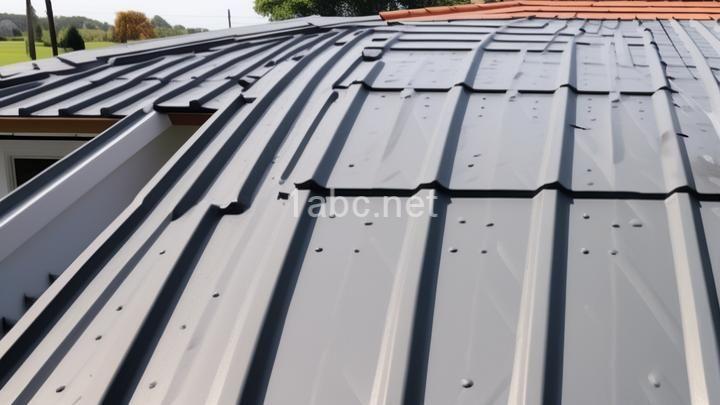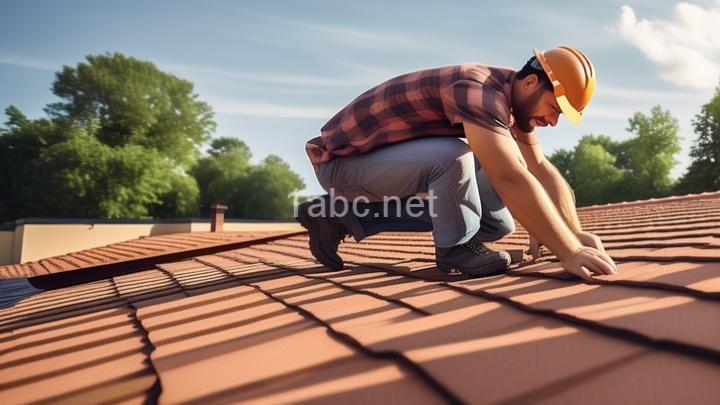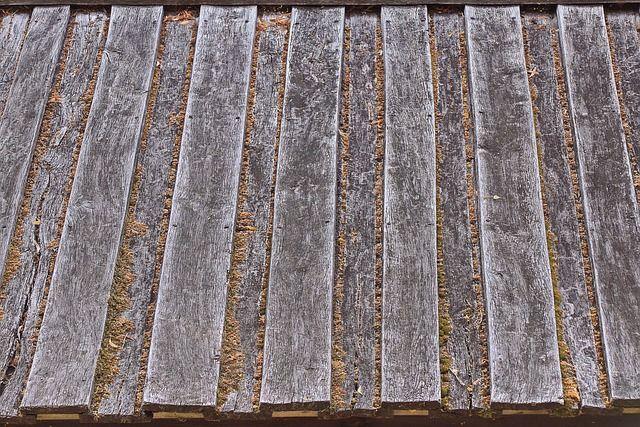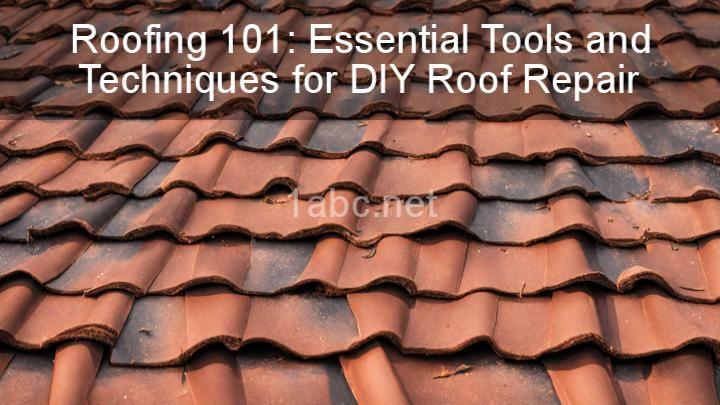Common Roofing Problems and How to Fix Them Yourself

Introduction:
Hey there homeowners! Are you tired of dealing with common roofing problems and spending a fortune on professional repairs? Well, you're in luck because in this blog post, we're going to provide you with some helpful tips and techniques for fixing these issues on your own. We understand that roofing problems can be frustrating, but with the right knowledge and precautions, you can become a DIY roofing expert. So, grab your tool belt and let's dive into the wonderful world of roof repairs!
I. Identifying Roofing Problems
A. Leaks and Water Damage
-
Signs of leaks
Picture this: You walk into your attic after a heavy rainstorm, only to find water stains, dampness, or even mold growth. These are clear signs that you have a leaky roof. Don't panic just yet, though. We're here to help you fix it! -
Locating the source of the leak
To fix a leak, you first need to find its source. Start by inspecting the attic for any signs of water intrusion. Look for wet spots, water trails, or areas with obvious damage. Once you've identified the general area, it's time to take your investigation outside. -
Temporary fixes
While you may not be able to repair the leak completely on your own, there are temporary fixes you can implement to prevent further damage. Using roofing cement or a sealant, you can patch up the area around the leak until you can get professional help. Just remember, this is only a temporary solution!
B. Missing or Damaged Shingles
-
Identifying missing or damaged shingles
If you notice a shingle or two missing from your roof or if they are cracked or curling, it's time to take action. Missing or damaged shingles can lead to more significant problems if left unattended. -
DIY methods for replacing individual shingles
Replacing individual shingles is a task you can tackle on your own. All you'll need is a pry bar, a hammer, roofing nails, and replacement shingles. Carefully remove the damaged shingle, secure the new one in its place using roofing nails, and voila! You've just fixed your roof like a pro.
C. Sagging or Uneven Roof
-
Causes of sagging roofs
A sagging roof is not only an eyesore but also a sign of structural issues. It can be caused by water damage, excessive snow load, or even poor construction. Identifying the root cause is crucial to determining the appropriate repair method. -
Steps to shore up a sagging roof temporarily
While fixing a sagging roof requires professional expertise, you can take temporary measures to prevent further damage. Use adjustable support jacks or braces to reinforce the sagging areas. Remember, this is only a temporary solution until you can get professional help.
II. DIY Roofing Repairs
A. Patching Small Leaks
-
Materials needed for patching a small leak
To patch a small leak, you'll need roofing cement, a trowel, a putty knife, and some roofing fabric. -
Step-by-step instructions for patching the leak
Start by cleaning the area around the leak and removing any loose debris. Apply a generous amount of roofing cement to the affected area, making sure to cover it completely. Then, place the roofing fabric over the cement and press it down firmly. Finally, apply another layer of cement over the fabric to create a watertight seal. Allow it to dry, and your leak should be sealed!
B. Replacing Shingles
-
Tools required for shingle replacement
To replace shingles, you'll need a pry bar, a hammer, roofing nails, a utility knife, and replacement shingles. -
Detailed guide on removing old shingles and installing new ones
Start by carefully prying up the damaged shingle and removing any nails. Slide the new shingle into place, aligning it with the surrounding shingles. Secure it with roofing nails, making sure not to hammer too hard and damage the shingle. Trim any excess material using a utility knife, and you're done!
C. Reinforcing Sagging Roofs
-
Safety precautions when dealing with a sagging roof
Dealing with a sagging roof can be dangerous, so always prioritize safety. Use sturdy ladders and wear appropriate safety gear such as gloves and non-slip shoes. It's also a good idea to have someone assist you, just in case. -
Methods for reinforcing the structure temporarily
To temporarily reinforce a sagging roof, you can use adjustable support jacks or braces. These will help provide additional support until a professional can assess and repair the underlying issues. Remember, this is a temporary fix, so don't delay in calling a professional!
III: When to Call a Professional Roofer
A: Knowing Your Limits
1: Recognizing when a problem requires professional expertise
As much as we encourage DIY spirit, there are times when it's best to leave the job to the professionals. If you're dealing with extensive damage, major structural issues, or if you simply feel unsure or uncomfortable, it's time to call in the experts.
2: Importance of prioritizing safety over DIY attempts
Never compromise your safety for the sake of fixing your roof. Climbing on roofs can be hazardous, especially without the proper knowledge and equipment. It's always better to be safe than sorry, so don't hesitate to seek professional help when needed.
B: Complexity of Repairs
1: Explaining complex roofing issues that should be handled by professionals
Complex roofing issues, such as extensive water damage or major structural problems, require the expertise of a professional roofer. These repairs often involve intricate techniques and specialized tools that are best left to the experts.
2: Discussing the risks of improper repairs
Improper repairs can lead to more significant problems down the line. From ineffective fixes to potential safety hazards, it's crucial to understand the risks associated with attempting complex roof repairs without the necessary skills and knowledge.
C: Finding a Reliable Roofer
1: Tips for finding and choosing a reputable roofing contractor
Finding a reliable roofer can be overwhelming, but it's essential to do your research. Ask for recommendations from friends, family, or neighbors who have had positive experiences. Don't forget to check online reviews and verify their credentials and insurance coverage.
2: Questions to ask when interviewing potential roofers
When interviewing potential roofers, ask about their experience, licensing, warranties, and references. Don't be afraid to ask for a detailed estimate and compare it with other offers. Remember, it's your roof, and you deserve the best!
Conclusion:
Congratulations, DIY roofing enthusiasts! You've made it through this extensive guide on common roofing problems and how to fix them yourself. We hope you've gained valuable knowledge and are feeling empowered to tackle those pesky roof repairs. However, always prioritize safety and know your limits. If a problem seems too complex or you feel uncomfortable, don't hesitate to call a professional roofer. Remember, with the right knowledge and precautions, you can save time and money while keeping a sturdy roof over your head. Happy DIY roofing!
FREQUENTLY ASKED QUESTIONS
What are some common roofing problems that homeowners may encounter?
When it comes to roofing problems, homeowners may encounter a variety of issues. One common problem is roof leaks, which can be caused by damaged or missing shingles, cracked flashing, or inadequate sealing around vents and chimneys. Another issue is sagging or drooping roofs, which may indicate structural problems or excessive weight on the roof. Additionally, clogged gutters can lead to water damage and deterioration of the roof. Hail damage, wind damage, and the growth of moss or algae are also common problems that homeowners may face. It's important to address these issues promptly to prevent further damage and maintain the integrity of your roof.
How can I determine if there is a leak in my roof?
To determine if there is a leak in your roof, there are a few signs you can look out for. Firstly, check for water stains or discoloration on your ceiling or walls, as this could indicate water seeping through from the roof. Additionally, keep an eye out for any damp or musty odors in your home, as these could be a result of water infiltration. Another clue to watch for is the presence of mold or mildew, which often thrives in damp environments. If you notice any of these signs, it's important to investigate further and address the issue promptly to prevent further damage to your roof and home.
What are the potential causes of a leaking roof?
A leaking roof can be caused by various factors. Some potential causes include:
-
Damaged or missing shingles: If your roof has damaged or missing shingles, it can create openings for water to seep through.
-
Clogged gutters: When gutters become clogged with debris such as leaves and twigs, they can prevent proper water drainage, leading to water buildup on the roof and potential leaks.
-
Improper roof installation: If your roof was not properly installed, it can result in gaps or weak spots that allow water to penetrate.
-
Damaged flashing: Flashing is the material used to seal the gaps around chimneys, vents, and skylights. If the flashing is damaged or deteriorated, it can allow water to enter.
-
Age and wear: Over time, roofs can deteriorate due to age and exposure to the elements. This can result in weakened areas that are more prone to leaks.
-
Ice dams: In colder climates, ice dams can form on the roof, causing water to back up and seep under shingles, leading to leaks.
-
Roofing material damage: Certain roofing materials, such as clay tiles or wooden shingles, can become damaged or cracked over time, allowing water to penetrate.
It is important to identify and address the potential causes of a leaking roof promptly to prevent further damage to your home. If you are unsure about the cause or need assistance, it is recommended to consult a professional roofing contractor for a thorough inspection and necessary repairs.
Can I fix a leaking roof on my own, or do I need to hire a professional?
Fixing a leaking roof can be a challenging task, and it's important to consider whether you have the necessary skills and experience to handle the job on your own. While some minor leaks may be manageable for a DIY enthusiast, more serious issues may require the expertise of a professional roofer.If you're confident in your abilities and have some basic knowledge of roofing, you may be able to tackle a small leak yourself. However, keep in mind that working on a roof can be dangerous, especially if you don't have the proper safety equipment or experience. It's always best to prioritize your personal safety and consult a professional if you have any doubts.
Professional roofers have the expertise, tools, and materials to properly diagnose the cause of the leak and provide a long-lasting solution. They can also identify any underlying issues that may have contributed to the leak and address them accordingly. Hiring a professional ensures that the job is done correctly and reduces the risk of further damage or future leaks.
Additionally, professional roofers often have access to higher quality materials and can offer warranties on their work, giving you peace of mind. They can also provide valuable advice on roof maintenance and help identify potential issues before they become major problems.
In conclusion, while it may be tempting to try and fix a leaking roof on your own, it's important to assess your skills and the severity of the issue. When in doubt, it's always advisable to consult a professional roofer who can provide the necessary expertise and ensure a safe and effective repair.


